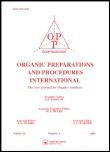
ORGANIC PREPARATIONS AND PROCEDURES INTERNATIONAL
Scope & Guideline
Empowering Researchers with Practical Organic Procedures
Introduction
Aims and Scopes
- Innovative Synthesis Methodologies:
The journal highlights new synthetic routes and methodologies for organic compounds, emphasizing practical, efficient, and reproducible procedures. - Green Chemistry Practices:
A strong focus is placed on environmentally friendly synthetic approaches, including the use of renewable resources, solvent-free reactions, and recyclable catalysts. - Catalysis in Organic Synthesis:
Research articles often explore the development and application of novel catalysts, including nanocatalysts and organocatalysts, to improve reaction efficiency and selectivity. - Biological Activity and Applications:
Many publications assess the biological activities of synthesized compounds, linking synthetic chemistry with medicinal chemistry and drug development. - Multicomponent Reactions:
The journal encourages research on multicomponent reactions, which allow for the rapid construction of complex molecules in a single step.
Trending and Emerging
- Sustainable and Green Chemistry:
There is a significant increase in research focused on sustainable chemistry practices, including the use of biobased solvents, renewable resources, and methodologies that minimize environmental impact. - Nanocatalysis and Recyclable Catalysts:
The use of nanotechnology in catalysis is trending, with numerous studies highlighting the development of nanocatalysts that are efficient, selective, and easily recoverable for repeated use. - Microwave and Ultrasound-Assisted Synthesis:
Emerging techniques such as microwave and ultrasound-assisted synthesis are gaining popularity, offering faster reaction times and improved yields. - Biological Evaluation of Synthesized Compounds:
An increasing number of publications are integrating biological evaluations of synthesized compounds, showcasing their potential as pharmaceutical agents and expanding the interdisciplinary nature of research. - Multicomponent and One-Pot Reactions:
There is a growing interest in multicomponent and one-pot reactions, which streamline the synthesis process and reduce the need for extensive purification steps.
Declining or Waning
- Traditional Synthetic Methods:
There is a noticeable decline in the publication of papers focusing solely on traditional organic synthesis methods, as researchers increasingly seek innovative and efficient alternatives. - Non-Green Solvents and Reagents:
Research involving conventional solvents and reagents is becoming less common, as the focus shifts towards greener, more sustainable practices. - Single-Component Synthesis:
The emphasis on single-component synthesis techniques has decreased, with a growing preference for more complex, multicomponent approaches that offer greater synthetic efficiency. - Inorganic Catalysis:
While studies on inorganic catalysts remain relevant, there is a diminishing trend in papers focusing exclusively on these catalysts, as organic and biodegradable alternatives gain traction.
Similar Journals
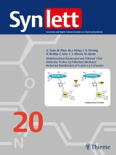
SYNLETT
Catalyzing Discoveries in Organic SynthesisSYNLETT is a prominent academic journal dedicated to the field of Organic Chemistry, published by GEORG THIEME VERLAG KG. Since its inception in 1989, the journal has played a critical role in advancing the understanding of synthetic methodologies and organic compounds, offering a platform for innovative research and discoveries. With an ISSN of 0936-5214 and an E-ISSN of 1437-2096, SYNLETT is well-regarded in the academic community, presently positioned in the Q3 quartile for Organic Chemistry according to the 2023 category rankings. The journal is particularly valuable for researchers and professionals seeking insights into contemporary organic synthesis methods and their applications. Although it does not operate under an Open Access model, it remains a crucial resource within the field, contributing to significant advancements and collaborations globally. For those engaged in organic synthesis, SYNLETT not only encapsulates cutting-edge research but also inspires innovation in the discipline.
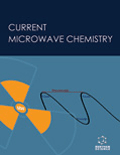
Current Microwave Chemistry
Pioneering Research in Microwave Chemistry for Tomorrow's SolutionsCurrent Microwave Chemistry is a pioneering academic journal dedicated to the dynamic and rapidly evolving field of microwave-assisted chemistry. Published by Bentham Science Publishers Ltd, this journal aims to disseminate high-quality research that explores innovative methodologies, novel applications, and the fundamental principles underlying microwave technology in chemical processes. Offering a platform for researchers, professionals, and students, Current Microwave Chemistry plays a crucial role in enhancing the understanding and application of microwave chemistry across disciplines such as synthetic chemistry, materials science, and pharmaceutical research. By facilitating open access to groundbreaking studies, this journal encourages collaboration and knowledge exchange, positioning itself as an essential resource for those looking to push the boundaries of what is achievable in chemical science.

MONATSHEFTE FUR CHEMIE
Fostering Innovation Through a Historic Lens on ChemistryMONATSHEFTE FUR CHEMIE, an esteemed journal published by Springer Wien, has been a significant contributor to the field of chemistry since its inception in the late 19th century. With a rich history spanning from 1880 to the present, this journal provides a platform for innovative research and comprehensive reviews in various areas of general chemistry. Although it currently holds a Q3 ranking in the miscellaneous category of chemistry, its commitment to maintaining high academic standards is reflected in its continued relevance and citation impact, as evidenced by its Scopus ranking. Researchers, professionals, and students engaged in chemical sciences will find this journal a valuable resource for advancing their knowledge and contributing to ongoing discussions in the field. For those looking to stay updated on the latest developments in chemistry while engaging with a storied publication, MONATSHEFTE FUR CHEMIE is a pivotal source of insightful content.
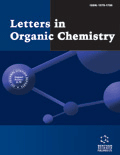
LETTERS IN ORGANIC CHEMISTRY
Fostering Dialogue for Future InnovationsLETTERS IN ORGANIC CHEMISTRY is a distinguished journal published by Bentham Science Publishers Ltd, focusing on the rapidly evolving field of organic chemistry. Established in 2005, the journal commits itself to disseminating vital research findings, reviews, and innovative methodologies that contribute to the understanding and advancement of organic chemistry and biochemistry. With an ISSN of 1570-1786 and an E-ISSN of 1875-6255, this journal enhances accessibility and visibility for authors and readers alike, albeit not adopting an open-access model. Positioned within Q4 quartile rankings for both Biochemistry and Organic Chemistry, it serves a niche audience keen on exploring emerging trends and breakthroughs in these disciplines. Its Scopus rankings further reflect its role in the global academic landscape, albeit at the beginning stages of its impact journey. Based in the United Arab Emirates, LETTERS IN ORGANIC CHEMISTRY is dedicated to fostering dialogue among researchers and practitioners, paving the way for future innovations in organic and biochemical sciences.
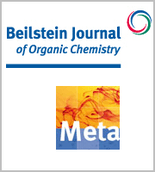
Beilstein Journal of Organic Chemistry
Pioneering cutting-edge research in organic chemistry.The Beilstein Journal of Organic Chemistry, published by the renowned BEILSTEIN-INSTITUT, stands as a pivotal platform for advancing the field of organic chemistry since its inception in 2005. With its commitment to Open Access publishing, this journal enables global readership and collaboration, fostering the dissemination of high-quality research. Operating from Germany, the journal has carved out a significant reputation, currently holding a Q2 ranking in the Organic Chemistry category, with impressive Scopus rankings placing it at #91 out of 211 in the field, achieving a 57th percentile. The Beilstein Journal is dedicated to publishing cutting-edge findings that span the breadth of organic chemistry, including synthetic methodologies, catalysis, and material sciences, making it an essential resource for researchers, professionals, and students looking to stay at the forefront of organic chemistry advancements. With a vision to enhance collaboration and knowledge sharing within the scientific community, the journal plays a vital role in shaping the future of organic chemistry research.
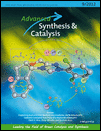
ADVANCED SYNTHESIS & CATALYSIS
Fueling innovation in chemical research.ADVANCED SYNTHESIS & CATALYSIS is a prestigious academic journal published by Wiley-VCH Verlag GmbH, based in Germany. This journal, with ISSN 1615-4150 and E-ISSN 1615-4169, plays a pivotal role in the fields of Chemistry and Chemical Engineering, earning commendable rankings such as Q2 in Catalysis and Q1 in Organic Chemistry in 2023. Its high impact factor and recognition—ranking #18 in both Organic Chemistry and Catalysis—further underscore its significance as a platform for groundbreaking research and innovative methodologies. Spanning from 1996 through 2024, ADVANCED SYNTHESIS & CATALYSIS aims to disseminate high-quality, cutting-edge studies related to synthetic processes and catalytic technologies, ensuring accessibility via their open access options. By fostering a vibrant scholarly community, this journal serves as an essential resource for researchers, professionals, and students dedicated to driving advancements in synthetic and catalytic chemistry.
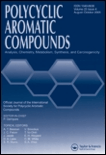
POLYCYCLIC AROMATIC COMPOUNDS
Transforming Research into Real-World ApplicationsPOLYCYCLIC AROMATIC COMPOUNDS, published by TAYLOR & FRANCIS LTD, is a pivotal journal dedicated to the study of polycyclic aromatic compounds, which play a significant role in fields spanning materials chemistry, organic chemistry, and polymers. With an ISSN of 1040-6638 and an E-ISSN of 1563-5333, this journal features a robust collection of research that informs and guides advancements in understanding the complex interactions and applications of these compounds. Having established its presence since 1990, POLYCYCLIC AROMATIC COMPOUNDS currently holds a Q3 ranking in multiple categories, including Materials Chemistry, Polymers and Plastics, and Organic Chemistry, showcasing its consistent contributions to scientific dialogues. Though traditionally not an open access journal, it provides immense value to researchers, professionals, and students seeking reliable and impactful studies. The journal is located in the United Kingdom at 2-4 PARK SQUARE, MILTON PARK, ABINGDON OR14 4RN, OXON, ENGLAND, and continues to be a trusted source for cutting-edge research in the field.
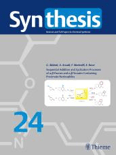
SYNTHESIS-STUTTGART
Innovating Synthetic Methodologies for a Sustainable Future.SYNTHESIS-STUTTGART
Published by the esteemed Georg Thieme Verlag KG, SYNTHESIS-STUTTGART stands as a vital resource in the field of Chemistry, specifically focusing on Organic Chemistry and Catalysis. With an impressive publication history dating back to 1970 and continuing through 2024, it serves as a platform for innovative research and developments in synthetic methodologies and their applications. The journal holds a significant impact factor, reflecting its influence within the academic community, and is recognized in the Scopus rankings as a reputable source in its categories, with a rank of #99/211 in Organic Chemistry and #43/68 in Catalysis. Researchers, professionals, and students alike can benefit greatly from its content, which upholds rigorous peer-review standards and contributes to the global discourse in these critical scientific domains.

Heterocyclic Letters
Championing High-Quality Research in Organic ChemistryHeterocyclic Letters is an esteemed journal in the field of synthetic organic chemistry, published by RAMAN PUBL. With ISSN 2231-3087 and E-ISSN 2230-9632, this journal aims to disseminate original research and innovative findings related to heterocyclic compounds, which play a crucial role in medicinal chemistry, material science, and agricultural chemistry. Heterocyclic Letters provides a platform for researchers, professionals, and students to share their insights and advancements, thus fostering academic collaboration and knowledge transfer. The journal is dedicated to maintaining high-quality standards in research publication, making it an essential resource for anyone focused on the latest developments in heterocyclic chemistry. Although it does not currently offer Open Access options, the journal’s rigorous peer-review process ensures that only the most credible and impactful studies are published, contributing significantly to the advancement of the field.
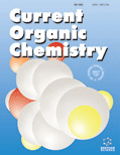
CURRENT ORGANIC CHEMISTRY
Innovating Insights in Organic Chemistry ResearchCURRENT ORGANIC CHEMISTRY, published by Bentham Science Publishers, stands as a pivotal platform in the field of organic chemistry, providing innovative insights and advancements since its inception in 1997. With an ISSN of 1385-2728 and an E-ISSN of 1875-5348, this esteemed journal has carved a niche in the academic landscape, currently ranking in the Q3 category for Organic Chemistry according to the 2023 metrics. Operating from the United Arab Emirates, it engages a diverse audience of researchers, professionals, and students by delivering quality peer-reviewed articles that cover a broad spectrum of organic chemistry research. Although the journal does not offer open access, it remains a respected source of knowledge, indexed in Scopus with a percentile ranking of 43, encouraging rigorous discourse and the dissemination of cutting-edge findings. With continuous publication through 2024, CURRENT ORGANIC CHEMISTRY is dedicated to advancing the frontiers of organic chemistry research and technology.